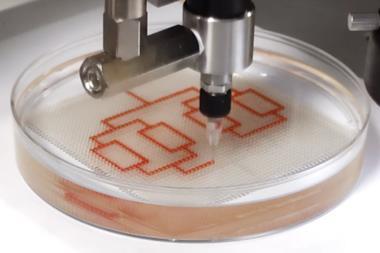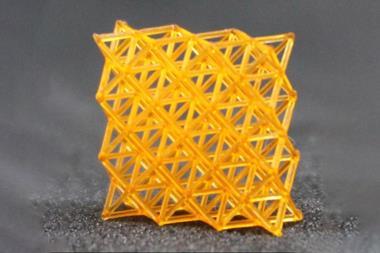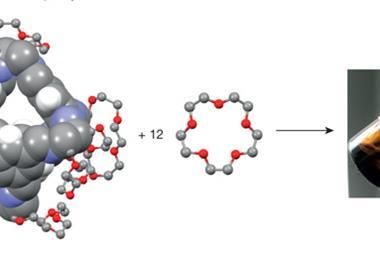An international team of scientists has created a liquid metamaterial, or ‘metafluid’, which can be manipulated to change its properties, like its viscosity and transparency.
The creators of the material found that it behaved like a Newtonian liquid in its normal state – when its viscosity is proportional only to its temperature – but as a shear thinning non-Newtonian liquid when compressed, which suggests a range of possible applications from robotics to shock-absorbers.1
While most metamaterials have been artificially-structured solids with desirable properties – such as the directional flow of electromagnetic radiation2 like light – the experimental metafluid aims to introduce some of these in a liquid form.
The new metafluid consists of hundreds of thousands of spherical elastic shells, on average 250μm across, made from silicone rubber and filled with air that are suspended in silicone oil. Under normal conditions the shells maintain their spherical shape and scatter light, making the metafluid opaque. But when the metafluid is compressed above a critical pressure – which can be tailored during the manufacturing process – the shells collapse into a half-moon shape. The metafluid then acts in a non-Newtonian manner, with its viscosity decreasing as it flows, and also becomes transparent to light, with the collapsed shells acting as tiny lenses. When the pressure then drops, the shells resume their spherical shape.
Senior author Katia Bertoldi, a professor of applied mechanics at Harvard University, says this method of creating a metafluid has many possibilities. ‘Collapsible shells introduce interesting behaviours into the fluid, and this may expand their functionality and lead to state-dependent properties,’ she says.
To test the usefulness of their approach, the researchers used a version of their metafluid, containing two types of collapsible shells, in a robotic hydraulic gripper – one type of shell that collapsed at around 60kPa and another that collapsed around 350kPa. They then used the gripper to grasp objects of different sizes and compressive strengths.
A traditional hydraulic system using air or water would need some sort of external sensing or controls to be able to adjust its grip to hold different objects without breaking them. But the robotic gripper using the metafluid was able to pick up a heavy glass bottle, an egg and a blueberry without any additional sensing or controls: instead, the metafluid itself responded to the different pressures required.
Future research will focus on changes in the thermodynamics and acoustics of the metafluid, thereby ‘enabling the enhancement of thermodynamic cycles and customisable sound propagation’, the researchers wrote. ‘The versatility of these metafluids opens numerous opportunities for functionality,’ they added.
Physicist Corentin Coulais, who studies soft matter and metamaterials at the University of Amsterdam but was not involved in the new study, says some earlier research had considered the prospects of using such metafluids in robotics, but ‘this is taking the topic much further’.
He notes that metafluids need not only consist of suspended spheres, but also of other types of suspension, as well as quite different substances. But ‘the bottleneck is always in making those things,’ he says. ‘That’s pretty much what limits what you can do and what you can imagine.’
Physicist Anton Souslov, who studies soft materials and mechanical metamaterials at the University of Cambridge but who also wasn’t involved, says the idea is ‘especially intriguing’. ‘Fluid flow is all around us, and this work demonstrates the richness of novel flow phenomena that can be realised when the underlying fluid is composed of meta-atoms,’ he says.
References
1 A Djellouli et al, Nature, 2024, 628, 545 (DOI: 10.1038/s41586-024-07163-z)
2 J Zeng et al, Sci. Rep., 2013, 3, 2826 (DOI: 10.1038/srep02826)












No comments yet